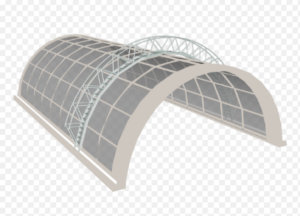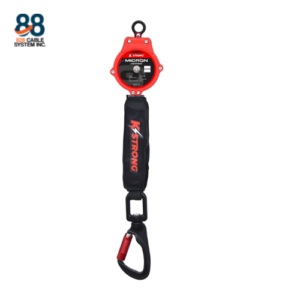
Fall Arrest Lifeline Solutions: Ensuring Safety in the Philippines & Asia
In industries across the Philippines and Asia, ensuring the safety

Workplace injuries can happen in any industry and can cause serious harm to employees. In fact, according to the Occupational Safety and Health Administration (OSHA), falls are the leading cause of workplace injuries and fatalities in the construction industry, and one of the leading causes in other industries as well. Fortunately, there is a first line of defense against these injuries: fall protection.
Fall protection is a system designed to prevent falls from heights, including falls from roofs, scaffolds, ladders, and other elevated work surfaces. It includes a variety of equipment and techniques, such as guardrails, safety nets, personal fall arrest systems, and warning lines. The goal of fall protection is to minimize the risk of injury by providing a safe working environment for employees who work at height.
Employers have a responsibility to provide a safe workplace for their employees, and this includes providing adequate fall protection. OSHA has strict regulations in place to ensure that employers are taking the necessary steps to protect their workers from falls. These regulations require employers to assess the workplace to determine if any hazards are present, and to provide appropriate fall protection equipment and training to employees who work at height.
By providing fall protection, employers can prevent injuries and fatalities and reduce the risk of costly workers’ compensation claims. In addition, fall protection can help to improve employee morale and productivity by creating a safe and secure work environment.
It’s important to note that fall protection is not a one-size-fits-all solution. The type of fall protection needed will depend on the specific work environment and the tasks being performed. For example, guardrails may be appropriate for workers who are working on a flat roof, while a personal fall arrest system may be necessary for workers who are working on a scaffold.
To sum up, fall protection is an essential component of workplace safety. Employers must understand that protecting their employees from falls is not only a legal obligation, but it also promotes a positive work culture and improves the company’s bottom line. By investing in the appropriate fall protection equipment and training, employers demonstrate their commitment to their employees’ safety, which in turn increases employee morale and productivity.
Effective fall protection strategies require careful planning and implementation. Employers must identify potential hazards and take steps to minimize the risk of falls. This may include installing guardrails, safety nets, or personal fall arrest systems, depending on the specific work environment and tasks being performed. Employers must also provide training to employees on the proper use of fall protection equipment and ensure that equipment is regularly inspected and maintained.
The benefits of fall protection extend beyond injury prevention. Employers who prioritize workplace safety create a more attractive workplace for potential employees and improve their reputation in the industry. Additionally, by reducing the likelihood of workplace injuries, employers can avoid the costs associated with lost productivity, medical expenses, and workers’ compensation claims.
In conclusion, fall protection is not just a legal requirement, it is a critical investment in the safety and well-being of employees. Employers who take the time and effort to implement effective fall protection strategies can create a safer, more productive workplace, and ultimately reap the rewards of a positive company culture and improved financial performance.

In industries across the Philippines and Asia, ensuring the safety

In today’s architecture and urban planning, greening solutions play a

In today’s fast-paced world of construction and maintenance, efficient access

In industries where working at heights is commonplace, ensuring the

In workplaces where heights are involved, ensuring safety against falls

In the realm of modern architecture, the integration of innovative
Copyright © 828 Cable System Inc. Philippines 2023 All Right Reserved